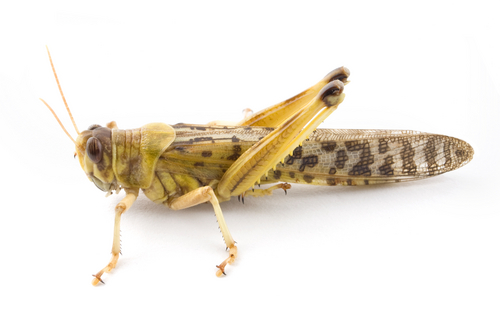The Threat to Agriculture Which May Be the Result of Climate Cooling
by Martin Armstrong, Armstrong Economics:

Locusts have plagued farmers for millennia. When we look at the plague of locust in Africa which is now spreading to China, it brings up visions of the Book of Exodus, which recounts around 1446 BC the Egyptians experienced an exceptional ravenous Plague of Locusts which was the eighth Biblical plague. As Exodus describes, “They covered the face of the whole land, so that the land was darkened, and they ate all the plants in the land and all the fruit of the trees that the hail had left. Not a green thing remained, neither tree nor plant of the field, through all the land of Egypt.”
Plagues of Locusts had been recorded in history since ancient times. Just where these plagues have taken place is interdependent with the weather. The insects can arrive quite unexpectedly when even the wind changes direction blowing them in from far distant lands. They also seem to swarm more aligned with cold weather and may reach plague levels during climate change. Besides the famous Biblical account as the eighth plague, the Ancient Egyptians also carved locusts on tombs in the period 2470 to 2220 BC about 1,000 years prior to the Biblical plague about 1446 BC. We even find mention of such plagues by Homer in his Iliad recording locusts taking to the wing to escape a fire. Looking at the Quran, we also find mention of locust plagues. Pestilence in the northwestern provinces of China during 311 AD resulted in the death of 98% of the population. They blamed the crisis on locusts. There was a link also with the rise in the population of rats that spread disease since they devoured the locust carcasses. In the ninth century BC, the Chinese authorities even appointed anti-locust officers suggesting that the problem was serious.
Aristotle was interested in the problem and conducted studies into locusts to try to understand their breeding habits. The Roman historian, Livy, also mentions that there was a devastating plague in Capua in 203 BC. Livy associated human epidemics following locust plagues which were most likely caused by starvation. Livy, on the other hand, associated the rise in human disease with the stench from the putrifying corpses. Nevertheless, there were realizations taking hold that there was a clear link of human disease outbreaks to locust plagues.
From a cyclical perspective, using the data from China, there were 116 major outbreaks over a period of nearly 2000 years. The average plague event seemed to be 17.2 years which seems to align with Pi. Research has discovered that serotonin, the brain chemical involved in depression and anger in humans, turns out to have another surprising role transforming desert locusts from a solitary lifestyle into swarming voracious insects that can devour orchards and fields in a matter of hours. The findings were published in Science, which may point the way to new locust-control methods. They are a solitary insect that shuns other members of its species and flying only by night. However, cyclically, when their densities reach a certain threshold, locusts become gregarious. It is at this time when they seek out one another’s company and reproduce explosively. This is when massive swarms emerged and they then can move thousands of kilometers beyond their usual habitats. The behavior changes unfold with a complete physical makeover, taking several generations, during which the insects first turn pink and eventually black and bright yellow.
During the last two millennia, locust plagues continued to appear at irregular intervals with the main recorded outbreaks of the desert and migratory locusts occurring in Africa, the Middle East, and Europe. Other species of locusts caused havoc in North and South America, Asia, and Australasia. The Bombay locust (Nomadacris succincta) was a major pest in India and southeastern Asia in the 18th and 19th centuries but has seldom swarmed since the last plague in 1908. Such swarms can ravish crops, causing famine and consequent social unrest. The Chinese for more than 2,000 years have had officials recording details of the outbreaks with respect to their frequency and severity, the affected areas and the number of people who died of famine following infestations. A recent study shows that locust swarms in China align with periods of climate change turning colder. (see: Thousand-year-long Chinese time series reveals climatic forcing of decadal locust dynamics.)
Read More @ ArmstrongEconomics.com
Loading...



